"We Died an Easy Death:" Three of Montana's Worst Mining Disasters
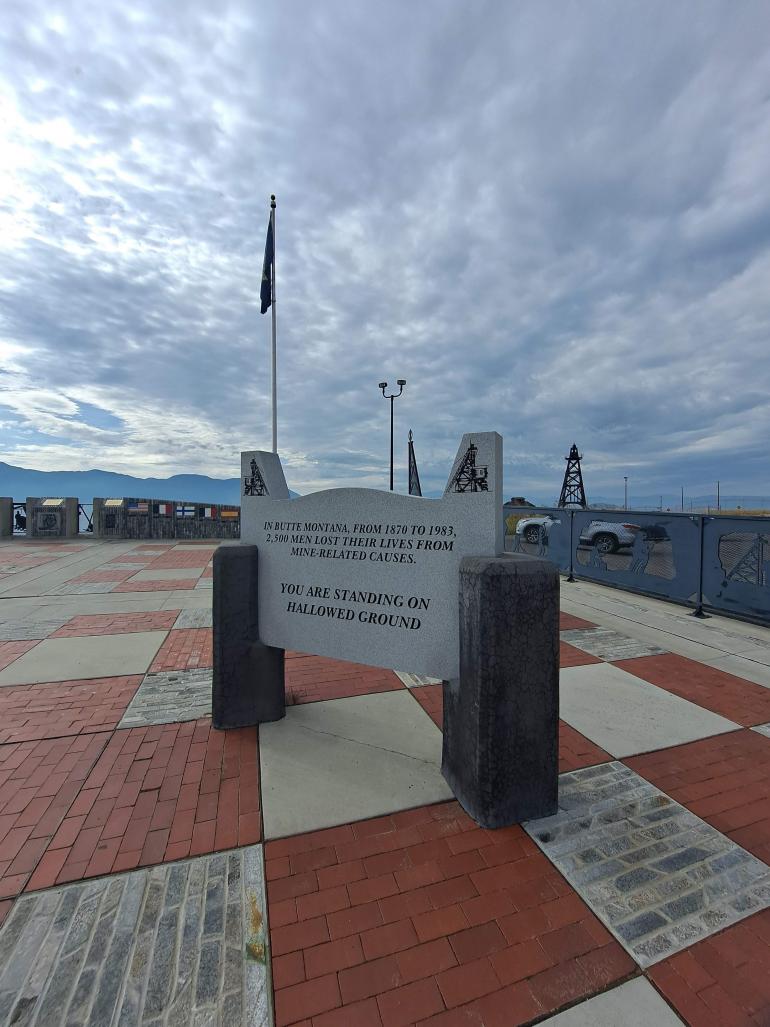
Photo by Sherman Cahill
In hard rock mining, the "nipper" is an entry-level position for someone, usually young and potentially a child, who assists the miners in getting them fresh equipment, exchanging out old bits, and fetching whatever the miners need. In the Butte of 1911, child labor laws were still far down the road, and the job was often occupied by twelve to nineteen-year-old boys.
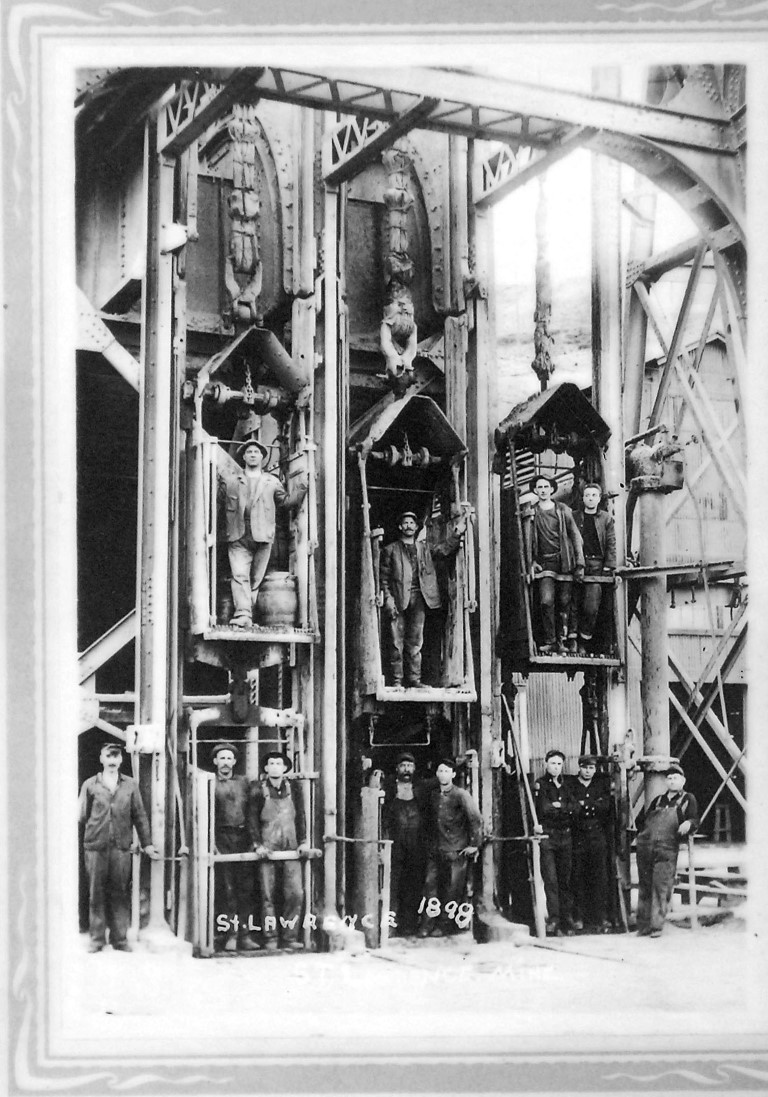
On September 3rd of 1911, according to the (slightly unreliable) 1934 classic of Butte history Copper Camp, eight young nippers at the Black Rock Mine stepped into a steel cage loaded with old drill bits, shafts of steel, and worn-out tools. Safety laws forbade men (and certainly children) from riding in the equipment cage. They were to use the cage intended for workers, which was hoisted to the surface fifteen minutes after the other. The nippers, thinking they could shave off some time, rode with the equipment, as had their predecessors, the boys who had trained them. It was an open secret that nippers rode the cage, despite being strictly against the rules.
And there was a reason why the boys were not supposed to ride the cage. It might go well enough for a hundred, even a thousand rides to the surface. But this time, something went dreadfully wrong. Somehow a shaft of steel slipped out of the grate of the cage, dragging against the walls of the tunnel as the enclosure was hauled at great speed to the surface. The steel tore out wooden beams and pieces of the tunnel's wall, as well as sending the cage careening around the tight passage.
By the time the eight nippers reached the surface, the cage was broken and wrenched out of shape. Six of the youths were dead, bodies mangled beyond recognition. The other two were still alive, but badly mutilated. They died shortly after, as horrified miners looked on.
Yet, oddly enough, no one seems to agree as to what happened that day, and to whom it happened to: other historical sources report that there were no survivors, even for a few minutes, and that the victims were grown men impatient to reach the surface, not industrious children. A Washington Post article from September 9th, 1911 also reported that the victims were adults, but adds another horrible detail: "[the] station tender... was hurled from the upper deck of the cage to the lower level by the impact when the brakes were applied, and was decapitated, as were all the other miners, with the exception of [one miner], whose head was mashed to a pulp."
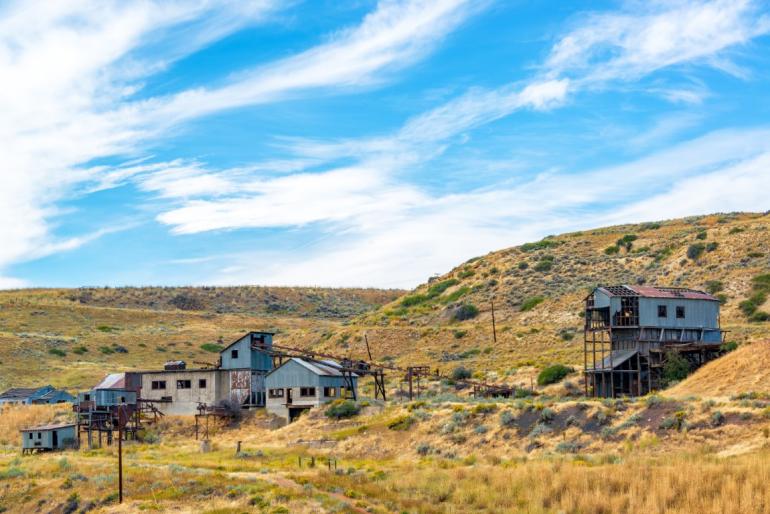
It serves as an object lesson in the morbidly high mortality rate of mining that the Smith Mine disaster of 1943, in which 74 souls were lost, is both the worst coal mining disaster in Montana’s history, and only the 43rd worst in the nation's history.
No one knows for sure what ignited the explosion, but there are some likely contenders. For one, coal mining produces a prodigious amount of dust, as well as methane, and the Smith Mine was known for producing higher than average methane. Something can ignite a layer of dust, which in turn ignites the gas. We also know that the mine was at that time operating under relatively lax safety measures. Miners were allowed to smoke cigarettes and, though headgear that used lightbulbs (and not, by extension, an open flame as the source of illumination) was available, they were not used in the mine. There was a war on, after all, and those resources needed to be gathered as cheaply as possible to support the troops, or so someone must have reasoned.
Whatever started the conflagration, the explosion occurred deep enough in the mine that people on the surface didn’t hear or feel it, and could only tell that something bad had happened when a particularly foul-smelling smoke began to rise from the bowels of the mine.
The initial explosion killed 30 men instantly, but more than 40 died of wounds sustained in the blast or inhalation of poisonous gases. Heartbreakingly, a small group of men managed to hole themselves up in a stove and, though they succumbed to the gas after about two hours, they were able to scrawl some chalk messages on the walls and the lid of a dynamite box. One of them read, “Goodbye Wifes and Daughters. We died an easy death.”
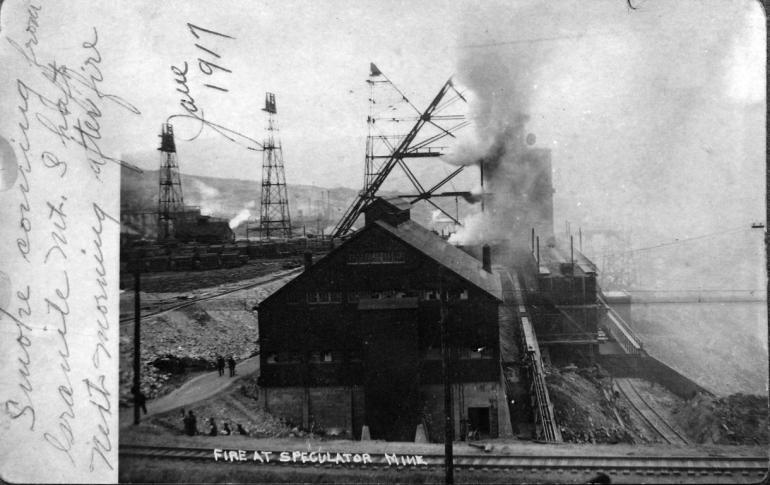
Photo source: Butte/Silver Bow Archives
The worst disaster in Montana mining history occurred on June 8th, 1917, and began in the depths of the Granite Mountain mine. An electric cable, ironically a component of a new fire safety system, was being installed in the shaft, but something went wrong, and it fell, sustaining damage. In the dark, 2,500 feet deep, a foreman crouched to inspect the coiled cable with his carbide lamp. The cable had a safety layer of lead around the oil-soaked cloth used to insulate the electric cord, but some of the lead had been stripped away during the bungled installation. The foreman, trying to inspect the damage, brought the lamp closer to the frayed cord. The exposed fiber ignited, and spread, and nearly at once the length of the cord caught fire, followed by the timber in the shaft, which had been chemically treated.
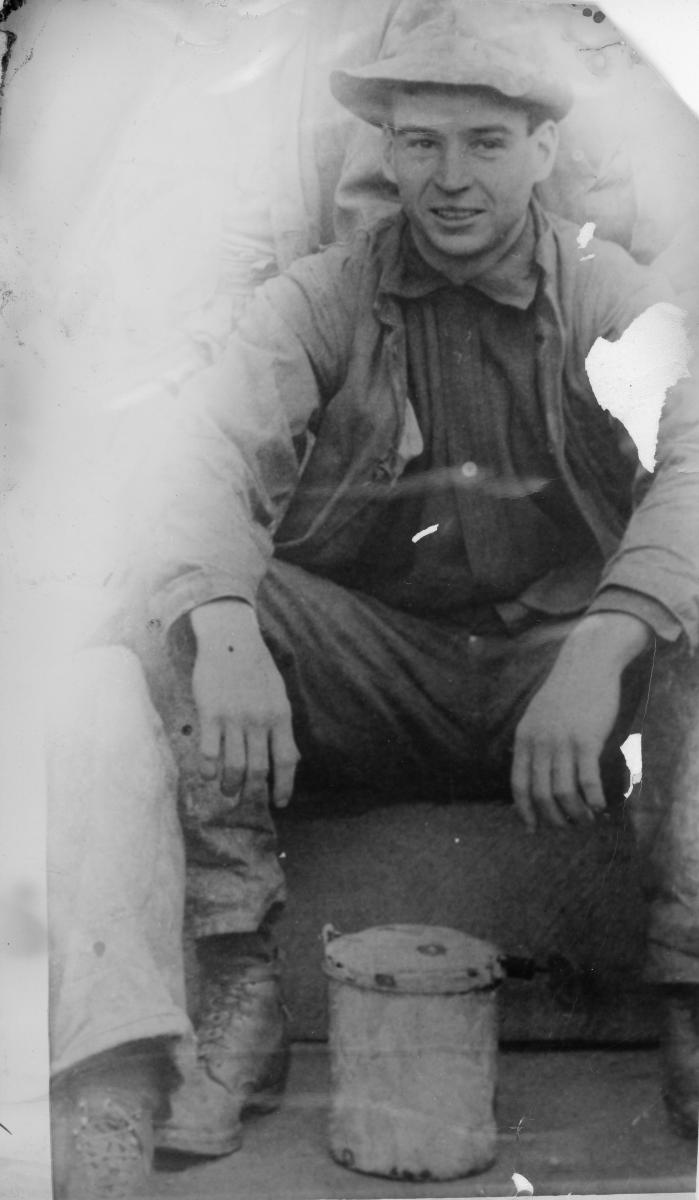
The land under Butte was a network of interconnected tunnels, with many mines meeting one another underground. The Granite Mountain Mine was attached to the Speculator, the Bell-Diamond, the Badger State, and more. Granite Mountain had previously been known as a downcast shaft, admitting more fresh air than many of the others. Intermittent fires and fire alarms at the nearby Modoc Mine over the previous two months had accustomed some of the miners to trying to escape up through the Granite Mountain shaft, which offered a refuge from the smoke. Many men thought that this was another conflagration at the Modoc, and beat for Granite Mountain. In this case, they were running right toward the source of the blaze. Gas also spread, making hundreds of miles of underground tunnel poisonous and confounding rescue attempts.
A mining cage had just descended into the mine with two occupants. Moments later, a great gout of flame shot from the mouth of the tunnel, and the men on the surface knew that the elevator’s riders had been dropped into an inferno. Little was found of the men later, save for a few teeth and one of the buttons of their overalls.
Some were able to reach the surface, and an initial headcount of survivors indicated that there were about 200 men still trapped below. The town itself was a frenzy of activity, as families rushed to the mines to see if their husbands, fathers and brothers had survived. The streets were choked with cars and wagons—anything that could serve as a makeshift ambulance—or hearse—was put to use.
Amazingly, the man whose lamp started the blaze, Sully Sallau, was able to escape the initial disaster. Hours later, after the fire in the Speculator had appeared to subside, twelve brave volunteers, including Sallau, descended into the mine to try to rescue any survivors. After they reached the bottom, they were met with another wave of poisonous gas. All of them were killed.
As is always the case, disasters are also sites for exceptional grace and sacrifice. Manus Duggan, a 25-year-old nipper, exhibited just that when, shortly after the fire’s breakout, he organized 29 of his fellow miners and led them toward a chamber that was still free of gas. The men sealed it off, constructing a makeshift bulkhead out of whatever they had on hand, including wood, dirt, and their own clothes. When small holes appeared, and gas began to penetrate their cross-cut, they would remove another article of clothing to patch them. As the hours pressed on, Duggan, knowing that time was limited, set out with two other men to try and find safe passage, so that he could return to lead his group out. The group of 26 men waited. Duggan never returned. His body and the bodies of the other men would only be discovered days later, having failed to find passage.
Finally, with oxygen running out, the remaining miners decided to try to find their own path to safety. They sprinted to the nearest station and discovered, tears in their eyes, jubilant, that the air in the station was clean, thanks to working air pumps. They rang the station signal to notify people above and to have them send down a cage.
All told, 168 souls were lost. Duggan was rightly praised as a hero, and $800,000 in compensation was distributed among the families of the deceased, but there were those who felt that $4,000 a miner was not equal to the life of a loved one, a friend, or a worker. Tensions between the mining companies and labor were already simmering, but the Granite Mountain produced a rolling boil. In August, the conflict would partially lead to another of the legends of Montana history: the brutal and still-unsolved murder of socialist agitator Frank Little by parties unknown.
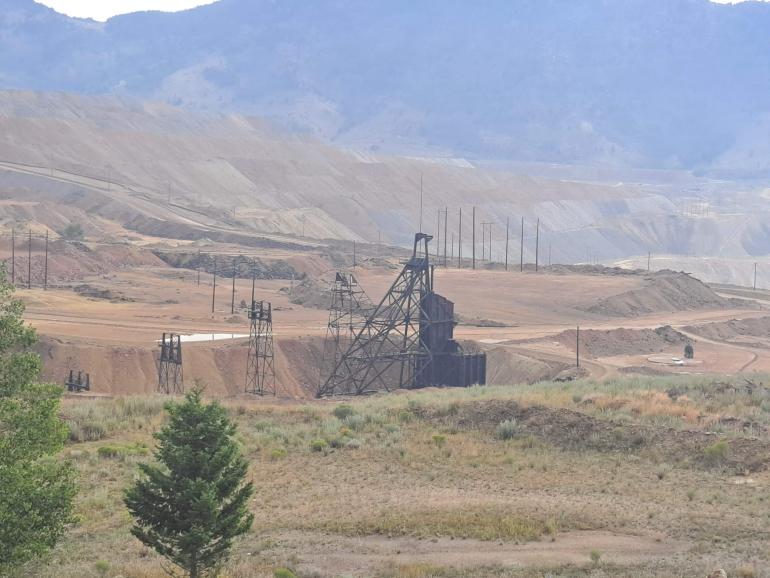
Photo by Sherman Cahill
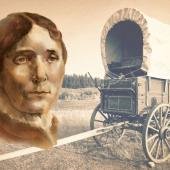
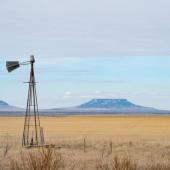







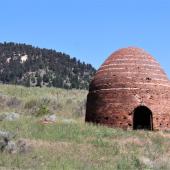

- Reply
Permalink